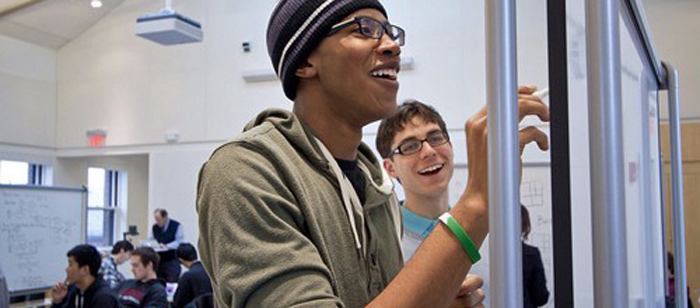Reinventing the Classroom:
creating a new course and a space to teach it
Gordon McKay Professor of Computer Science
Harvard University
12:00-2:00 ITE 456, UMBC
slides (ppt); talk (video); discussion (video)
TALK AND LUNCH: 12:00-1:00. Lunch courtesy of Dr. Warren DeVries, Dean of the College of Engineering and Information Technology. RSVP on my.umbc.edu by Monday, February 25 to reserve a spot. Email requests from outside UMBC to .
DISCUSSION: 1:00-2:00. The community is invited to stay after the talk for an open discussion and conversation with Professor Lewis and your UMBC colleagues about designing new classroom spaces for active learning and the flipped classroom approach.
For decades my lectures kept getting better, my enrollments kept going up, and the number of warm bodies in the lecture hall kept going down. So I decided to try something entirely different, a "flipped classroom." Students watched lectures over the Internet at night in their rooms, and spent class time solving problems under supervision in small groups. The subject matter was discrete mathematics, which is well suited to this pedagogical style, but the class was so successful that it is being adapted for use in other Harvard courses. I will report on some of the conceptual and practical problems I encountered, including the creation of a new teaching space, which had to be cheap to construct and adaptable in use since the experiment might have failed.
Harry Lewis is Gordon McKay Professor of Computer Science at Harvard, where he has taught since 1974. He is uncertain whether he should be proud of his role in launching the careers of Bill Gates and Mark Zuckerberg, both of whom dropped out of Harvard shortly after taking his course. From 1995-2003 Lewis served as Dean of Harvard College. In this capacity he oversaw the undergraduate experience, including residential life, career services, public service, academic and personal advising, athletic policy, and intercultural and race relations. He is a long time member of the College’s Admissions Committee.
For more information, see his article Reinventing the Classroom in the Fall 2013 issue of Harvard Magazine.







